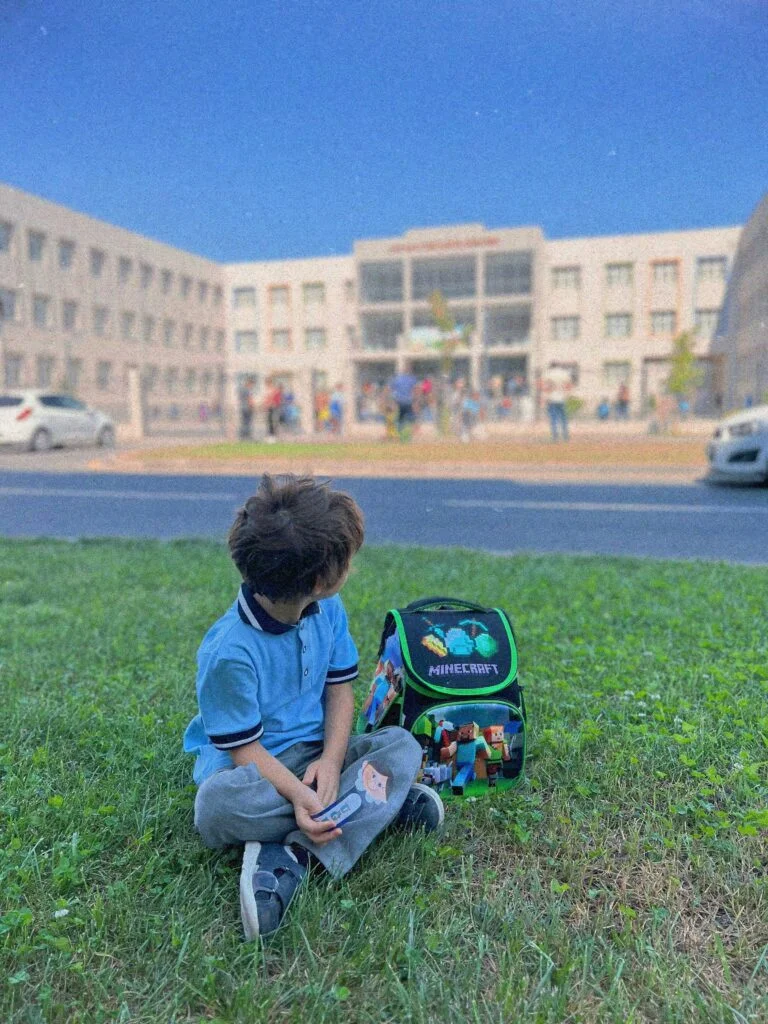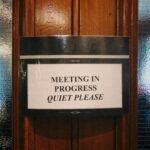Not Just Building Blocks: Exploring the Dynamics of Minecraft High School
Minecraft, often perceived merely as a block-building game, serves as a complex simulation of social interaction, mirroring the dynamics of high school life. Within this digital universe, players engage in crafting their own social structures, which are reminiscent of the cliques and factions typical in traditional school settings. As players navigate through this virtual environment, they encounter intricate social dynamics including the formation of friendships, the emergence of rivalries, and the spread of rumors, which replicate the nuances of real-life adolescence.
The significance of community gatherings cannot be overstated. Events such as group build sessions, competitions, or social meet-ups act as catalysts for interaction, encouraging players to collaborate and, at times, compete against one another. These gatherings foster a sense of belonging and community, much like school assemblies or lunch breaks where relationships are formed and tested. As players build their virtual identities, they often find themselves aligning with certain factions, resembling the groups found in high school, which can lead to both support networks and conflicts.
The various player interactions within Minecraft — from cooperative building projects to in-game betrayals — further illustrate the complexities of high school social life. Players might find enjoyment in forming alliances for mutual benefits but can quickly turn adversarial, reflecting the volatility of teenage relationships. Additionally, the fluidity of friendships in the Minecraft community allows for an exploration of loyalty and trust, themes that resonate deeply with the experiences of adolescents in real life.
Through this engaging medium, Minecraft provides not only a platform for creativity but also a valuable lens for examining the intricacies of high school social dynamics. By navigating the virtual halls of their crafted high school, players gain insights into the very essence of friendship, rivalry, and community, enhancing their overall experience and understanding of interpersonal relationships.
The Formation of Factions in Minecraft: A Study in Group Dynamics
In the expansive virtual world of Minecraft, the formation of factions mirrors the social cliques commonly seen in high school environments. Players often band together to create factions, which serve as both a social construct and a strategic alliance. These units are typically formed out of shared interests, goals, or even friendships, much like adolescent groups that coalesce based on common ground. The motivations for joining a faction can vary significantly; some seek camaraderie, while others might aim for protection in a competitive setting.
Inside these factions, a distinct group dynamic emerges. Members often experience a heightened sense of loyalty towards one another, which can foster a supportive environment that encourages collaboration. However, this loyalty can also generate tension during conflicts, both internal and external, as members vie for status or leadership positions. Such competition mirrors the social hierarchies in high schools where individuals constantly navigate their positions within a group. The stakes in Minecraft often hinge on teamwork, resource sharing, and mutual protection, making the dynamics of faction formation crucial to gameplay.
Additionally, alliances within the game constantly shift, reflecting the fluid nature of teenage relationships. Factions may forge temporary partnerships with one another to achieve specific objectives, only to later dissolve as new interests emerge. This behavior encapsulates the often volatile nature of high school relationships, where friendships can quickly evolve into rivalries and vice versa, all shaped by the pressures of the environment. Through an exploration of these dynamics, one can gain deeper insight into how the social structures within Minecraft parallel the complexities of adolescent life.
My First Day: A Journey into the Mean Girls of Minecraft
Beginning my journey on the Minecraft server felt akin to stepping into a new high school, where social hierarchies and established cliques could make or break my experience. Upon logging in, I was greeted not by cheering classmates, but by a cacophony of avatars scampering across a pixelated landscape, each adorned in unique skins that reflected their personalities. As I gazed at my chosen skin—a modest character draped in simple leather armor—I couldn’t shake the feeling that I stood out like a sore thumb among a sea of vibrant costumes. This initial awkwardness was exacerbated when I was met with a chorus of playful jabs from the more seasoned players. Their comments ranged from light-hearted jests about my skin’s lack of flair to more pointed remarks about my apparent cluelessness.
It became apparent that social dynamics on the server mirrored those of a high school cafeteria. As I navigated through the factions, I remembered the phobia of fitting into an established group—an all-too-familiar fear. The playful banter that felt harmless at first quickly revealed an underlying hierarchy, with each player vying for status and approval from their peers. My attempts to contribute to conversations often left me feeling like an outsider looking in, as the more established members of the faction effortlessly exchanged inside jokes and references that were foreign to me.
Moreover, the experience of being roasted seemed to echo the classic “mean girls” trope, where insecurities are laid bare, and the stakes of acceptance loom large. Despite the seemingly digital nature of Minecraft, the essence of camaraderie and rivalry felt palpably real. Each encounter served as a reminder of the challenges faced in high school: trying to navigate friendships while grappling with the fear of judgment. Such experiences led me to reflect on not just my virtual gaming world but also the insecurities felt in real life as I endeavored to carve my own niche within this tight-knit community.
The Mean Girls Phenomenon: Cyberbullying in Minecraft
The gaming environment of Minecraft fosters not only creativity and collaboration but can also give rise to adverse social dynamics, particularly within factions. This phenomenon often mirrors the “mean girls” archetype common in real-life social narratives, where exclusionary behavior and bullying manifest. In Minecraft, this can manifest as players forming cliques that frequently ostracize others. Such groups may engage in derogatory remarks, ridicule, or outright exclusion, creating a toxic atmosphere that can deter new players and damage the self-esteem of those targeted.
Instances of cyberbullying in Minecraft typically revolve around a few core behaviors. For instance, players may share derogatory comments in chat, exploit in-game power dynamics to intimidate others, or manipulate faction membership through underhanded means. This not only transforms the social landscape of the game but can lead to feelings of isolation and anxiety among those affected. Importantly, the emotional consequences of such behavior extend beyond the virtual world, impacting players’ mental well-being and their overall gaming experience.
Furthermore, the ethical implications of cyberbullying in such gaming communities are significant. Developers and community leaders face the challenge of not only encouraging positive interaction but also taking a strong stance against harmful behaviors. Addressing the “mean girls” mentality requires an awareness of how players interact, the promotion of inclusive environments, and the establishment of clear guidelines to ensure fairness and respect within the game. Encouraging players to report abusive behavior is one potential strategy to combat this issue effectively. By fostering empathy and collaboration, the Minecraft community can work towards mitigating the negative impacts of exclusion and bullying.
Minecraft: A Digital Sociology Experiment
Minecraft, a sandbox video game developed by Mojang, provides an exceptional platform for digital sociology. The open-ended nature of the game encourages players to build, explore, and interact within a virtual environment. This interactivity allows for a unique form of social experimentation, where players can engage in various social hierarchies, forms of governance, and community-building exercises. These activities mirror real-world social behaviors and relationships, making Minecraft a valuable subject for sociological analysis.
At its core, the game reflects essential social dynamics such as cooperation, competition, and conflict. Players form factions with different social structures, reflecting societal norms and roles. For instance, some may choose to create hierarchical systems, where certain players assume leadership roles, while others may opt for egalitarian approaches, promoting inclusivity and shared governance. These choices allow players to experiment with power dynamics and communal living, which can yield insights into their real-life social interactions.
Additionally, the anonymity afforded by digital platforms enables players to explore identities and social boundaries. The ability to adopt different skins, usernames, and roles can lead to an exploration of social constructs such as gender, race, and age. Through these avatars, players may experience discrimination or solidarity, thereby enriching the understanding of social behaviors in digital spaces. The concept of the “social experiment” is essential here, as Minecraft creates scenarios that push players to navigate complex interpersonal relationships. This engagement can reveal patterns often absent in traditional social environments.
By applying sociological frameworks—such as symbolic interactionism or social constructionism—researchers and players alike can critically evaluate in-game interactions as reflections of societal structures. Such analysis leads to a deeper understanding of how virtual experiences shape real-world social identities and community dynamics. Consequently, Minecraft serves not only as a leisure activity but also as an insightful medium for observing, engaging with, and reflecting upon social behavior.
Reality Check: The Emotional Impact of Minecraft Drama
The phenomenon of high school drama within Minecraft transcends the boundaries of mere gameplay; it encapsulates a range of emotional experiences that can profoundly affect players. In an environment designed for creativity and collaboration, players often find themselves embroiled in conflicts that evoke genuine feelings, mirroring the complexities of real-life social dynamics. The intricate social fabric of Minecraft servers can lead to the formation of factions, which may either foster camaraderie or incite rivalry, creating a virtual atmosphere reminiscent of adolescent life.
These digital interactions can yield significant psychological effects. For many players, the friendships formed in-game are built upon shared experiences, leading to emotional investments in one another’s actions and reactions. Consequently, betrayals or conflicts among players can evoke feelings of hurt, anger, or even anxiety. This emotional turmoil can shape a player’s mental state, influencing their overall gaming experience and perception of community. The interplay between the virtual and the real highlights the blurring lines of reality in the digital age, where individuals experience emotional highs and lows just as they would in face-to-face relationships.
Moreover, the anonymity provided by digital platforms may exacerbate emotional reactions. When players engage in Minecraft’s high school drama, they may feel emboldened to express themselves in ways they might avoid in real life. This duality can lead to both positive outcomes, such as forging deeper connections, and negative consequences, such as cyberbullying or exclusion. The importance of communication in navigating these emotional landscapes cannot be overstated, as understanding intentions and motivations is crucial for maintaining harmony within the factions formed in the game. In summary, the emotional impact of Minecraft drama is significant, evolving interactions that resemble the intricacies of real-world relationships, thus providing a complex backdrop for players navigating their digital adolescence.
Lessons from the Block: Understanding Social Interactions
The intricate world of Minecraft serves as a rich backdrop for exploring social interactions, as players often find themselves engaging in complex relationships that mirror those in the real world. These interactions, particularly within faction dynamics, can provide valuable lessons in communication, empathy, and conflict resolution. Understanding these dynamics is crucial for players as they navigate their virtual experiences and apply learned skills to real-life situations.
One of the key lessons from these interactions is the importance of effective communication. In factions, players must articulate their strategies, share resources, and negotiate alliances. This process encourages clear expression of thoughts and fosters active listening, which in turn strengthens relationships. Effective communication is not just about speaking; it also encompasses understanding non-verbal cues and emotions, skills that are transferable to real-life social settings.
Empathy plays a significant role in mitigating conflicts that arise between players. As factions compete for resources or power, misunderstandings can lead to disputes. Learning to view situations from another player’s perspective enables individuals to respond with compassion and understanding. This ability to empathize enhances interpersonal relationships both in the game and in daily life, as it encourages a more inclusive approach to problem-solving.
Furthermore, engaging in conflict resolution within the Minecraft community equips players with tools to handle similar situations outside the game. When faced with disagreements, players learn to negotiate solutions and compromise. These experiences cultivate resilience and adaptability, essential skills for thriving in any social environment. The virtual realm, with its challenges, provides a valuable platform for practicing these skills in a low-risk setting.
In conclusion, the lessons derived from social interactions within Minecraft are profound. By embracing the dynamics of factions and friendships, players can cultivate essential skills that enhance their real-life communication, empathy, and conflict resolution capabilities. These insights not only enrich the player’s experience within the game but also foster personal growth beyond the virtual block.
The Future of Minecraft Servers: Evolving Social Norms
The landscape of Minecraft servers is undergoing a significant transformation, shaped by the evolving social norms and technological advancements. As communities expand and diversify, there is a growing need for the establishment of inclusive environments that foster positive interactions among players. This evolution reflects a broader recognition of the importance of mental well-being in gaming, pushing servers to prioritize the creation of safe spaces where all individuals can engage without fear of harassment or discrimination.
Cyberbullying has emerged as a prominent concern within the gaming world, and Minecraft servers are no exception. As awareness regarding the detrimental effects of online harassment increases, server owners and administrators are implementing stricter community guidelines and moderation policies. Tools and resources designed to combat bullying and promote respectful behavior are being integrated, which allows for a more harmonious gameplay experience. The emphasis on healthy communication is expected to have lasting implications for future interactions in Minecraft and similar platforms.
As technology continues to evolve, so does the potential for player moderation within these communities. The integration of artificial intelligence and machine learning algorithms is paving the way for smarter moderation tools that can detect harmful behavior in real-time, ensuring that players maintain a respectful and friendly atmosphere. This shift could revolutionize how interactions are managed on servers, enabling community members to actively participate in fostering a positive culture while also benefiting from proactive measures against negativity.
As we look ahead, it is evident that the future of Minecraft servers will heavily rely on the adaptation of these social norms and technologies. By recognizing the need for inclusive communities and implementing effective moderation strategies, Minecraft can remain a welcoming environment, rich with opportunities for collective creativity and camaraderie among players.
Conclusion: Minecraft as a Reflection of Life’s Complexities
Minecraft serves as a remarkable platform that extends beyond mere construction and crafting; it encapsulates the intricate nature of human relationships and social dynamics. Just as in high school, where friendships are formed, rivalries burgeon, and alliances shift, players navigate through their own unique experiences in this virtual realm. In many ways, the game models life’s complexities by showcasing how factions emerge based on shared interests, goals, or conflicts, mirroring the real-world scenarios that individuals frequently encounter.
The interactions within Minecraft exemplify teamwork, communication, and negotiation. Players often find themselves collaborating to survive or building expansive worlds, reflecting their capacity to work together towards common objectives. Conversely, the game also highlights aspects of competition, where players may engage in rivalries that echo those encountered in their daily lives. Such dynamics encourage individuals to develop not only strategic thinking but also emotional intelligence, as players must contend with varying personalities and interpersonal conflicts.
This environment encourages self-reflection and personal growth, fostering an understanding of how relationships develop under various circumstances. As players encounter challenges—whether from hostile entities or disagreements with companions—they are forced to adapt and resolve conflicts, mirroring the challenges of adolescence and beyond. In this way, Minecraft does not merely serve as a playground but as a profound reflection of life’s complexities and the multifaceted nature of human behavior.
As we conclude, it is essential for readers to recognize their experiences in Minecraft, both collaborative and competitive, as metaphors for real-life social interactions. This intersection of virtual and actual experiences offers valuable insights into how we can navigate our personal relationships and develop stronger social bonds, making Minecraft a nuanced reflection of life’s ever-evolving landscape.

It could cover a range of topics related to health, wellness, beauty, personal growth, and social issues, all from the perspective of striving for beauty, intelligence, youthfulness, and impartiality





